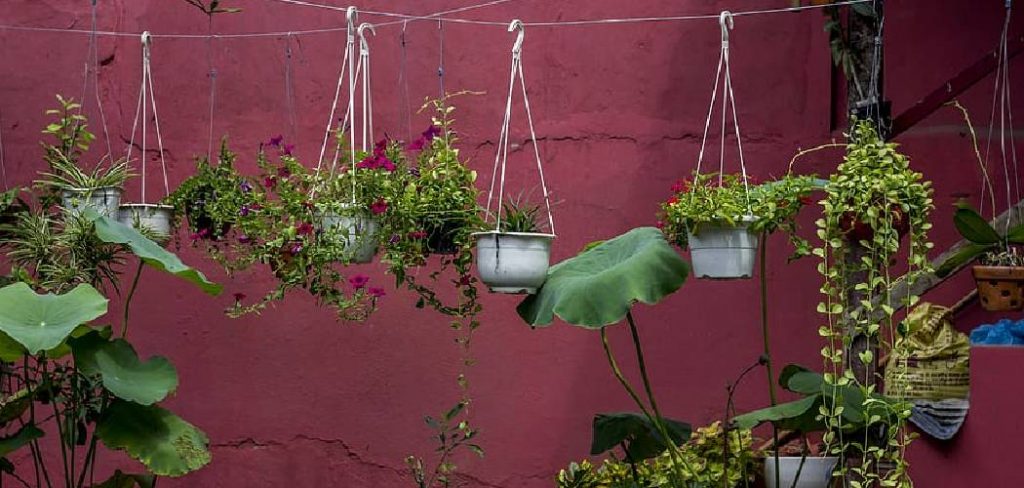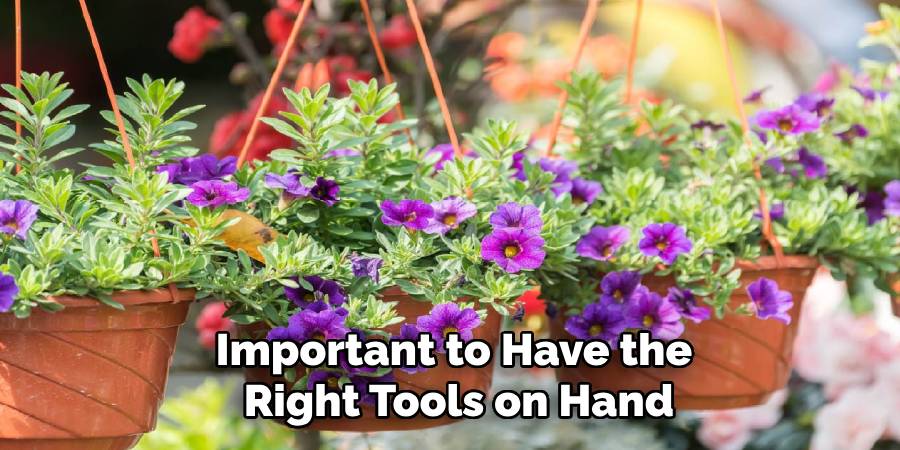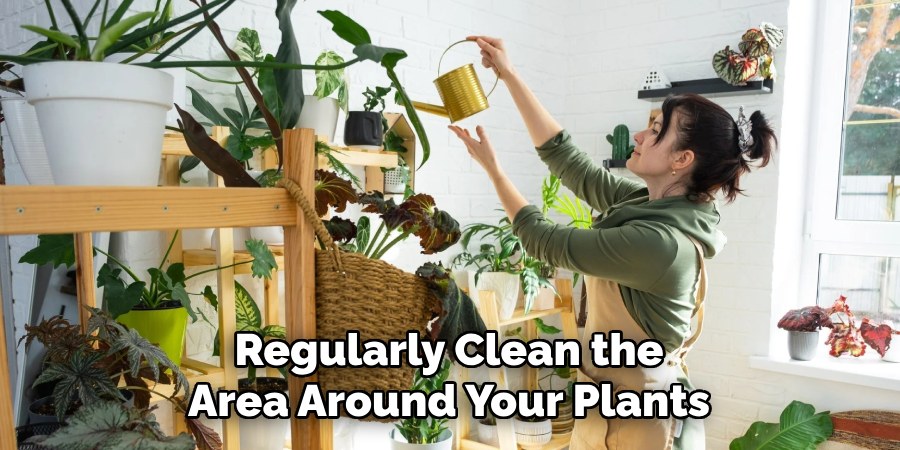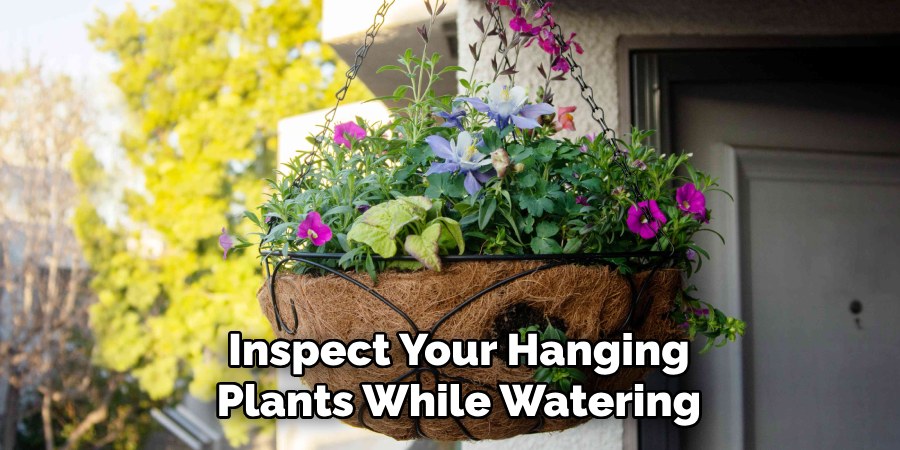Are you tired of constantly struggling to water your high-hanging plants? Do you often end up with water all over the floor and no moisture left in the soil? Worry not, we have got you covered!
Watering high-hanging plants can be a challenging task, especially when they are placed out of reach. These plants often serve as decorative elements in homes, adding greenery and charm to indoor or outdoor spaces. However, their elevated position requires a thoughtful approach to ensure they receive adequate hydration without causing spills or damage. By using the right tools and techniques, you can effectively maintain the health and vibrancy of your high hanging plants with ease.

This guide on how to water high hanging plants will explore practical strategies to make the process more efficient and hassle-free.
What Are the Benefits of Hanging Plants?
Hanging plants are a versatile and attractive addition to any space. They not only add visual interest and beautify the surroundings, but they also offer several other benefits.
- Space-saving: With limited floor space, hanging plants provide an excellent solution for those looking to bring some greenery into their homes without cluttering the floor.
- Air Purification: Plants are known to absorb harmful toxins from the air and improve its quality. By hanging them, you can maximize their ability to filter out pollutants.
- Mood Booster: Studies have shown that being around plants can improve our mood and reduce stress levels. Hanging plants provide a constant reminder of nature’s beauty, helping us feel more relaxed and at ease.
- Design Element: Hanging plants can be used as a decorative element in any room. They add texture, color, and depth to space, making it more visually interesting and inviting.
- Space Saver: In small living spaces, hanging plants can save valuable floor space while still adding the benefits of having live plants in your home.
- Versatility: With the wide variety of plant species available, you can create a unique look for your home by mixing and matching different types of hanging plants. From cascading vines to full, bushy foliage, the options are endless.
What Will You Need?
To start your hanging plant collection, you will need a few basic supplies:
- Hanging Baskets or Pots: These can be found in various sizes and materials such as ceramic, plastic, or macrame.
- Potting Soil: Choose a well-draining soil that is suitable for the types of plants you will be using.
- Plants: Consider the lighting and watering needs of each plant before making your selection.
- Hooks or Brackets: These will be used to hang your plants from the ceiling or wall.
10 Easy Steps on How to Water High Hanging Plants
Step 1. Gather Your Tools:
Before you begin watering your high-hanging plants, it’s important to have the right tools on hand. Some of the most useful items include a step ladder or sturdy stool to safely reach the plants, a watering can with a long spout for better control, or a spray bottle if your plants prefer misting. For a more advanced solution, consider using a hose attachment designed for indoor use, which can make watering high-up plants easier. Additionally, have a towel or tray nearby to catch any excess water that drips down and avoid creating a mess on your floors or furniture.

Step 2. Check Plant Needs:
Understanding your plants’ specific needs is essential for their health and growth. Begin by researching the light, water, and humidity requirements for each species you own. Some plants thrive in bright, indirect sunlight, while others prefer low-light conditions. Pay attention to the soil, ensuring it remains moist but not overly saturated, as overwatering can lead to root rot. Regularly inspect leaves for signs of pests, discoloration, or wilting, which might indicate underlying issues. Tailoring your care routine to match each plant’s unique preferences will help them flourish and look their best.
Step 3. Position for Safety:
Ensure your plants are placed in locations where they are safe from potential hazards. Keep them out of reach of pets and small children, especially if the plants are toxic when ingested. Additionally, avoid placing plants in high-traffic areas where they might be accidentally knocked over. Securely position heavy pots on sturdy surfaces to prevent tipping, and consider using wall-mounted hangers or shelves for smaller plants.
Step 4. Water Gently:
Watering your plants is a crucial part of their care, but it should always be done with a gentle hand. Use a watering can with a narrow spout or a spray bottle to avoid flooding the soil, as overwatering can lead to root rot and other issues. Ensure the water reaches the roots without pooling on the surface, and always check the soil’s moisture level before watering. Different plants have varying needs, so take the time to understand your plant’s specific requirements.

Step 5. Avoid Overwatering:
Overwatering is one of the most common mistakes in plant care and can be detrimental to your plant’s health. To avoid this, always ensure proper drainage by using pots with drainage holes and well-draining soil. Monitor your plant for signs of overwatering, such as yellowing leaves, a musty odor, or overly soggy soil. It’s better to underwater slightly than to overwater, as most plants can recover more easily from a lack of water than from sitting in excess moisture. Adjust your watering routine according to the season and the specific needs of your plant to maintain a healthy balance.
Step 6. Protect Surfaces:
Use trays, coasters, or mats beneath your plant pots to protect surfaces from water damage and stains. Excess moisture from watering can seep through pots, especially those made of porous materials like terracotta, and cause unsightly marks on furniture or flooring. Choose a protective barrier that is both functional and visually appealing to complement your décor while safeguarding your surfaces.
Step 7. Clean Up:
Regularly clean the area around your plants to maintain a tidy and pleasant space. Remove fallen leaves, debris, or spilled soil to prevent messes and potential pest problems. Wipe down the pots and trays to keep them looking fresh and ensure there is no buildup of dirt or water stains. A clean environment will not only enhance the aesthetic appeal of your plants but also contribute to their overall health and longevity.

Step 8. Monitor Humidity:
Plants thrive in varying levels of humidity depending on their species, so it’s important to monitor and maintain the appropriate conditions for their health. Use a hygrometer to measure the humidity levels in the area where your plants are kept. For tropical plants, aim for higher humidity levels, while most other houseplants prefer moderate levels. If the air is too dry, consider using a humidifier, misting the plants with water, or placing water trays near them to increase moisture. On the other hand, avoid excessive humidity, as it can lead to mold or mildew. Regularly monitoring and adjusting humidity ensures your plants can flourish in their ideal environment.
Step 9. Adjust Schedule:
Keep an eye on your plant’s growth patterns and seasonal changes to adjust your care routine accordingly. Factors like light availability, temperature fluctuations, and humidity levels can shift throughout the year, affecting watering schedules, feeding, and overall maintenance. For instance, many plants enter a dormant phase during winter and require less water and nutrients, while growth often accelerates in spring and summer, demanding more attention. Regularly assess your plant’s needs and tweak your schedule to ensure they remain healthy and vibrant year-round.
Step 10. Evaluate Health:
Regularly monitoring the health of your plants is essential to ensure their long-term vitality. Start by inspecting the leaves for any discoloration, spots, or signs of pests. Check the soil to ensure it is neither too dry nor overly saturated, as both can impact root health. Prune dead or damaged parts of the plant to encourage new growth and prevent the spread of disease. Familiarize yourself with common issues specific to your plant species so you can address problems promptly.
By following these simple steps, you can maintain healthy and thriving plants in your garden or home.
5 Things You Should Avoid
- Overwatering
Hanging plants are often in pots with limited drainage, so overwatering can quickly lead to root rot. Always check the moisture level of the soil before adding more water.
- Using Cold Water
Plants prefer room-temperature water; using water that’s too cold can shock the roots and hinder their growth.
- Neglecting Proper Drainage
Ensure the pots have adequate drainage holes. Failing to do so can cause water to pool at the bottom, leading to unhealthy roots.
- Watering at the Wrong Time of Day
Avoid watering during the hottest times of the day, as it can cause quick evaporation and stress the plant. Instead, water in the morning or early evening.
- Skipping Regular Maintenance
If you forget to inspect your hanging plants while watering, you may miss signs of pests, fungus, or wilting. Make it a habit to check their condition every time you water.

Conclusion
How to water high hanging plants requires a blend of proper technique, timing, and attention to detail.
By ensuring you water deeply and evenly, avoid overwatering, and choose the right time of day, you can promote healthy root systems and thriving plants. Additionally, consistent maintenance and observation are key to catching potential issues early and keeping your plants in optimal condition.
With these practices, your high-hanging plants will not only survive but flourish, elevating the beauty of your space.
About
Jennifer Branett is a distinguished figure in the world of Garden design, with a decade of expertise creating innovative and sustainable indoor solutions. His professional focus lies in merging traditional craftsmanship with modern manufacturing techniques, fostering designs that are both practical and environmentally conscious. As the author of garden, Jennifer delves into the art and science of garden-fix, inspiring artisans and industry professionals alike.
Education RMIT University
(Melbourne, Australia) Associate Degree in Design (Jennifer Branett) Focus on sustainable design, industry-driven projects, and practical craftsmanship. Gained hands-on experience with traditional and digital manufacturing tools, such as CAD and CNC software.
Nottingham Trent University
(United Kingdom) Bachelor’s in Garden and Product Design (Honors) Specialized in product design with a focus on blending creativity with production techniques. Participated in industry projects, working with companies like John Lewis and Vitsoe to gain real-world insights.Publications and Impact
In indoor, Jennifer Branett his insights on Garden design processes, materials, and strategies for efficient production. His writing bridges the gap between artisan knowledge and modern industry needs, making it a must-read for both budding designers and seasoned professionals.
